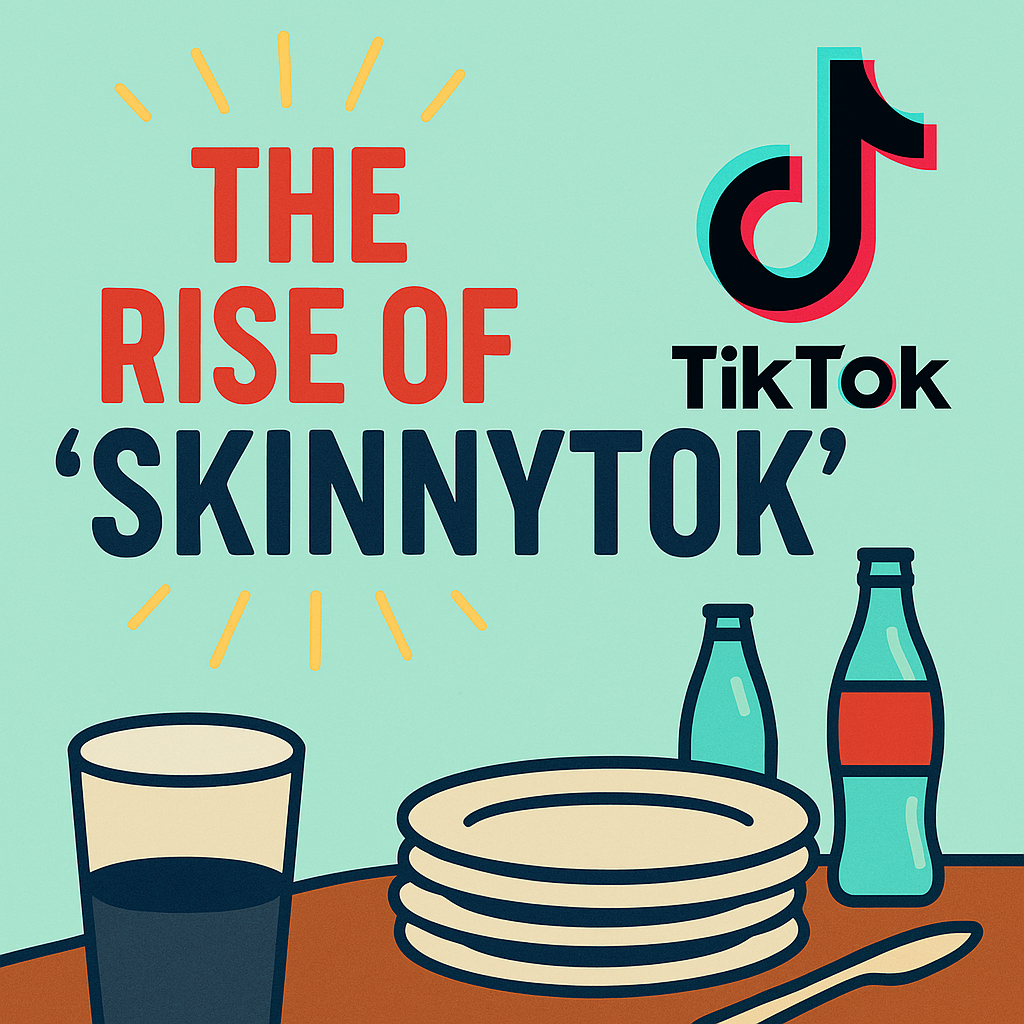Website designed with the B12 website builder. Create your own website today.
Start for free
The Emergence of ‘SkinnyTok’
‘SkinnyTok’ is a TikTok trend where users share content promoting extreme weight loss and unhealthy eating habits. The hashtag has amassed nearly 35,000 posts, featuring so-called motivational quotes and tips that encourage disordered eating behaviors. Phrases like “Hunger isn’t an emergency” and “Your weight is someone’s fear weight” are commonly shared, along with behavioral tips to curb eating.
Echoes of the Past: 90s and Early 2000s Diet Culture
The ‘SkinnyTok’ trend mirrors the toxic diet culture prevalent in the 1990s and early 2000s, characterized by the glorification of thinness and unhealthy weight loss methods. During that era, slogans like “Nothing tastes as good as skinny feels” and the promotion of ‘heroin chic’ aesthetics contributed to widespread body image issues. The resurgence of similar content on modern platforms raises concerns about repeating past mistakes.
Impact on Adolescent Mental Health
Exposure to ‘SkinnyTok’ content can have detrimental effects on teenagers:
• Body Dissatisfaction: Constant exposure to unrealistic body standards can lead to negative self-perception and low self-esteem.
• Disordered Eating Behaviors: The promotion of extreme dieting tips can encourage behaviors associated with eating disorders.
• Mental Health Struggles: Feelings of inadequacy and anxiety may arise from the pressure to conform to the portrayed ideals.
In 2024, Kids Helpline recorded over 1,100 body image-related contacts in Australia, highlighting the growing concern.
Expert Insights and Warnings
Health professionals and advocates have expressed alarm over ‘SkinnyTok’:
• Lexi Crouch, Nutritionist and Butterfly Foundation Advocate: Emphasizes the danger of promoting weight-centric messages to teenagers, highlighting the need for balanced perspectives on health.
• Mark Carter, Behavior Expert: Describes the trend as “extremely dangerous,” noting its potential to exacerbate body dysmorphia and disordered eating among youth.
• Melissa Wilton, Butterfly Foundation: Highlights that exposure to appearance-focused content increases the risk of body dissatisfaction and eating disorders.
Platform Responsibility and Community Response
While TikTok’s community guidelines prohibit content that promotes disordered eating, enforcement remains a challenge. Advocates are calling for more robust measures to detect and remove harmful content. Users are encouraged to report such content and curate their feeds to promote positive and healthy messaging.
Conclusion
The rise of ‘SkinnyTok’ serves as a stark reminder of the enduring challenges posed by diet culture on social media. By fostering awareness, promoting body positivity, and implementing stricter content regulations, we can work towards creating a safer digital environment for all users.
For more insights on navigating social media trends and promoting mental well-being, stay connected with our blog. Your health and happiness are our top priorities.